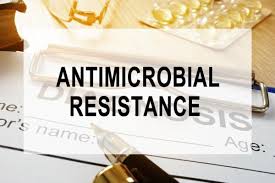Antimicrobial resistance (AMR) is a silent killer and is considered one of the most critical global health issues of the 21st century. It occurs when bacteria, viruses, fungi, and parasites evolve to resist the drugs designed to eliminate them, making standard treatments ineffective.
This phenomenon threatens to reverse decades of medical progress, endangering millions of lives and putting a strain on healthcare systems worldwide.
Understanding AMR, its causes, consequences, and how we can combat it is crucial to ensuring a future where common infections remain treatable.
What is AMR?
Antimicrobial resistance occurs when bacteria, viruses, fungi, and parasites become resistant to antimicrobial drugs. As a result, these drugs become ineffective, making it difficult to treat infections. This can lead to prolonged illnesses, increased medical costs, and a higher risk of death.
The World Health Organization (WHO) defines AMR as the ability of microorganisms to persist or grow in the presence of drugs designed to inhibit or kill them. This means that once-effective treatments, such as antibiotics, become less potent or, in some cases, completely ineffective.
Causes of AMR
The development of antimicrobial resistance is a natural evolutionary process driven by genetic changes in microorganisms. However, human actions significantly accelerate this process. Some of the primary causes include:
- Overuse of Antibiotics: One of the major drivers of AMR is the over-prescription and misuse of antibiotics. In some regions, antibiotics are taken without a doctor’s prescription.
- Incomplete Courses of Treatment: When individuals do not complete their prescribed course of antibiotics, some bacteria survive and can develop resistance to the drug.
- Poor Infection Control in Healthcare Settings: In hospitals and clinics, inadequate hygiene practices can lead to the spread of resistant bacteria between patients, especially those with weakened immune systems.
- Inadequate Sanitation and Clean Water: In many parts of the world, poor sanitation and lack of access to clean water contribute to the spread of infections and the emergence of drug-resistant bacteria.
Consequences of Antimicrobial Resistance
The impact of AMR extends beyond just human health, with far-reaching effects on society:
- Increased Mortality: Treatable infections such as tuberculosis, pneumonia, and urinary tract infections are becoming harder to treat. This leads to higher death rates and prolonged illnesses. According to WHO, 1.27 million global deaths were directly attributed to AMR in 2019, contributing to 4.95 million deaths.
- Longer Hospital Stays and Higher Medical Costs: Patients with resistant infections often require more expensive drugs and extended hospital care, increasing the financial burden on healthcare systems.
- Global Economic Impact: AMR could cost the global economy trillions of dollars due to increased healthcare costs and loss of productivity. It is estimated that by 2050, drug-resistant infections could cause 10 million deaths annually, surpassing the deaths caused by cancer.
Combating Antimicrobial Resistance
Addressing AMR requires a multi-faceted approach that includes policy reforms, public health measures, and individual responsibility. Key strategies include:
- Prudent Use of Antimicrobials: Governments, healthcare professionals, and patients must ensure that antibiotics and other antimicrobial drugs are used only when necessary.
- Research and Development: Investment in research is essential to develop new antibiotics, vaccines, and diagnostic tools. Additionally, exploring alternatives to antibiotics, such as bacteriophage therapy or antimicrobial peptides, could open new avenues for treating infections.
- Global Surveillance and Data Sharing: Strengthening global monitoring systems helps track the spread of AMR, and sharing data between countries can aid in identifying and responding to emerging resistant strains.
- Infection Prevention and Control: Proper hygiene, sanitation, and infection control measures in healthcare settings and communities are crucial for preventing the spread of resistant microbes. This includes handwashing, the use of personal protective equipment (PPE), and disinfection protocols.
- Public Education and Awareness: Raising awareness about the dangers of AMR and educating the public on the responsible use of antibiotics can help reduce misuse.
Role of Global Organizations
Global health organizations like the WHO, the Food and Agriculture Organization (FAO), and the World Organization for Animal Health (OIE) are actively involved in combating AMR worldwide. Initiatives like the “One Health Approach” aim to strengthen efforts in the fight against AMR.
What Can Individuals Do?
- Follow Medical Advice: Take antibiotics only when prescribed and complete the entire course as directed by healthcare professionals.
- Practice Good Hygiene: Regular handwashing, maintaining cleanliness, and practicing safe food handling can reduce the spread of infections.
- Avoid Self-Medication: Do not take antibiotics without consulting a doctor, and never use leftover antibiotics.
By Helen Okechukwu



